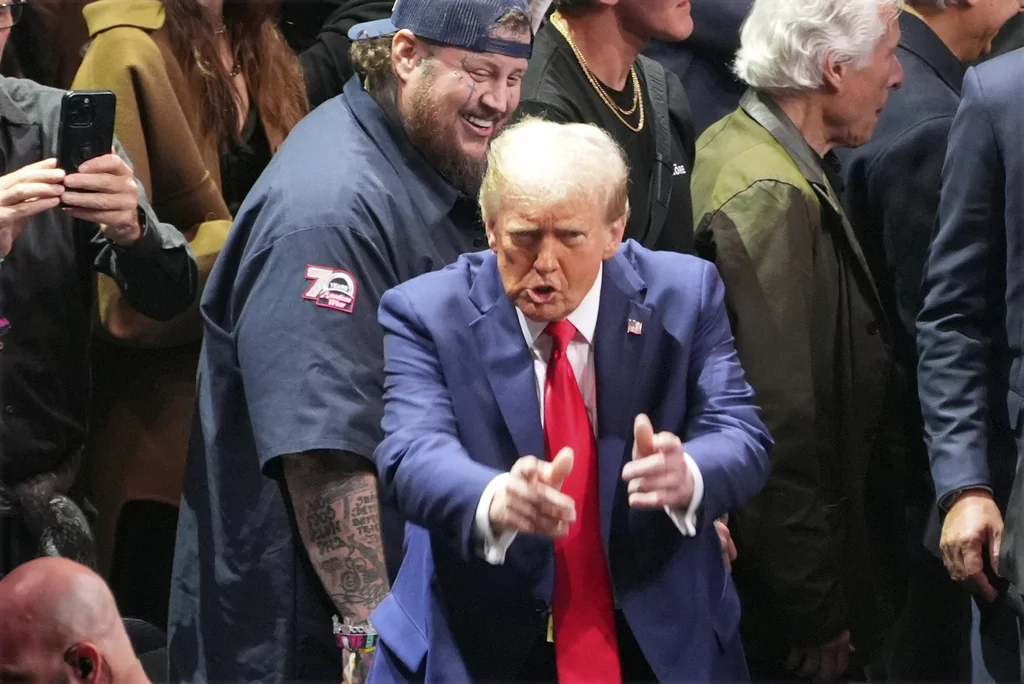

Trump took credit for appointing most of the Supreme Court justices who voted to overturn Roe v. Wade in 2022 but sought to insulate his campaign and the Republican Party from the resulting political fallout.
The former and now future president largely staked out a federalist position, saying abortion policy should be formulated by the states. The 48-year-old anti-abortion plank in the Republican platform was modified to drop support for the Human Life Amendment or other federal legislation prohibiting abortions. Trump denied supporting what Democrats described as a “national abortion ban,” sometimes going so far as to say that he would veto one if it were sent to his desk.
At the same time, Trump positioned himself to the right of Vice President Kamala Harris on abortion. He hit the Democrats hard on late-term abortions and challenged Harris on whether she would back any gestational limits on the procedure during their sole debate.
WHAT TRUMP HAS PROMISED TO DO ON DAY 1 IN THE OVAL OFFICE
“You should ask, will she allow abortion in the eighth month, ninth month, seventh month?” Trump pressed the moderators. He earlier said of the Democrats’ abortion position, “Because they’re radical. The Democrats are radical in that.”
Democrats relied heavily on the abortion issue to turn out voters and were able to curb Republican gains in the midterm elections two years ago. They had much less luck this year, with Republicans winning a trifecta of the White House, Senate, and House of Representatives.
According to the exit polls, Harris only narrowly led Trump on the question of who voters trusted more to handle abortion. Harris was chosen by 49% and Trump by 45%. Harris did win a big majority of those who listed abortion as their most important issue, receiving 74% to Trump’s 25%, but that was just 14% of respondents for a distant third place, behind democracy and the economy.
There was no noticeable drop-off in anti-abortion support for Trump, even as many anti-abortion activists expressed disappointment with his 2024 positioning. He won 91% of those who said abortion should be illegal. (For comparison, he won 90% of those who said their most important issue was immigration.) But he also managed to draw 29% of voters who favored legal abortion.
Harris won easily among the voters who said abortion should be legal in all cases, beating Trump 87% to 10%. But they split those who supported legal abortion in most cases equally, at 49% apiece. Trump won voters who wanted abortion to be illegal in most cases, 92% to 7% for Harris. He beat Harris 88% to 11% among voters who said abortion should be illegal in all cases.
Trump won 82% of white evangelicals, a voting bloc disproportionately opposed to abortion, which was his best showing in three presidential campaigns. He carried white Protestants overall with 72%. Trump received 57% among Catholics of all races and 61% among white Catholics.
One possible sign of social conservative slippage: a somewhat smaller percentage of voters reported being white evangelicals or born-again Christians than in 2016 and 2020. Trump won 80% of these voters against Hillary Clinton and 76% against President Joe Biden four years ago.
Constitution Party presidential nominee Randall Terry, a longtime anti-abortion activist, qualified for the ballot in just 12 states and has so far received 41,177 votes. Terry was not on the ballot in California and did not swing any of the three battleground states where he did appear — Michigan, North Carolina, and Wisconsin — against Trump. Terry finished seventh nationally.
At the same time, Trump carried three of the seven states that voted to protect legal abortion. A liberal abortion ballot initiative in Florida failed to receive the required 60%, with Trump among those voting no. However, Trump also ran nearly 13 points ahead of the no-vote to win Florida easily.
Even in South Dakota, where a solid majority voted against creating a constitutional right to abortion, Trump ran nearly 5 points ahead of the no-vote.
Nationally, Trump won the popular vote and took 312 electoral votes while facing an electorate that, according to exit polls, broadly favored legal abortion 65% to 31%, though when broken down further, 65% backed at least some restrictions. Yet only 6% said abortion should be illegal in all cases.
“We saw lots of people who voted in favor of abortion access and still voted for Donald Trump,” Liz Hamel, director of Public Opinion and Survey Research for KFF, told NPR.
CLICK HERE TO READ MORE FROM THE WASHINGTON EXAMINER
Trump will next have to navigate the politics of abortion in the confirmation fight for Robert F. Kennedy Jr., a longtime supporter of legal abortion, to become secretary of health and human services. Trump may need to reassure Republicans that his administration will still adopt the same basic posture on abortion as in his previous term, though one senior alum of that administration has already come out against Kennedy.
“I believe the nomination of RFK Jr. to serve as secretary of HHS is an abrupt departure from the pro-life record of our administration and should be deeply concerning to millions of pro-life Americans who have supported the Republican Party and our nominees for decades,” former Vice President Mike Pence said in a statement.






